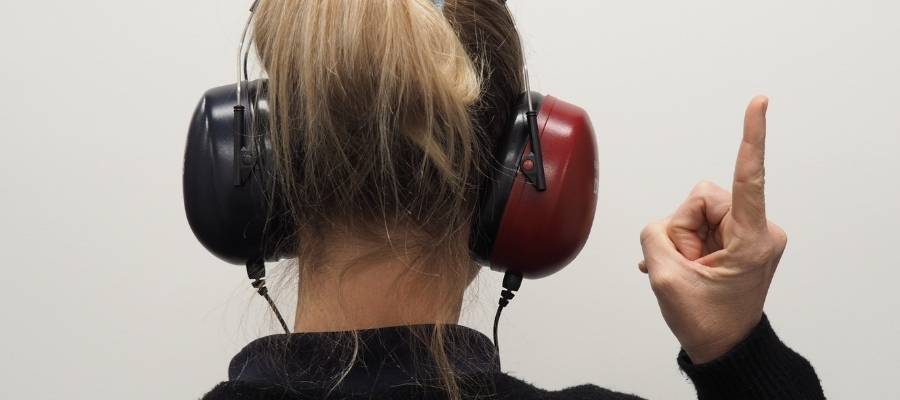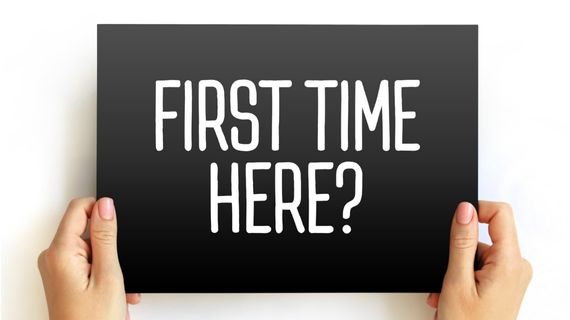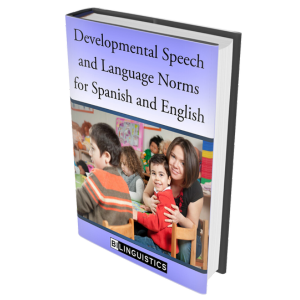A great deal of research focuses on how hearing loss affects speech. We wanted to create a quick summary so we can identify what’s important during the speech evaluation process and see how hearing loss affects speech in the academic setting. So let’s roll back the clock to grad school but come away with just the Cliff’s Notes on hearing loss and speech.

Children receive greater access to language due to discoveries concerning early diagnosis, treatment, and advances in hearing screening. That’s a fact.
The problem is that hearing loss sneaks under the radar at times, masquerading as behavioral problems or other communication disorders. Speech-language pathologists are in the perfect place to catch it before it slips by and turns into a misdiagnosis or delayed services down the road.
We just need a refresher on how hearing loss affects speech so we can revisit the hearing screening if we think a child’s audition is impaired.
Prelinguistic Vocalizations
Prelinguistic vocalizations (the trills, squeaks, and growls) of children with hearing impairment (HI) have a strong motoric base (Wallace, 1999), and resemble the sounds made by hearing children in the first half-year of life (Oller et al., 1985).
Canonical Vocalizations (Babbling)
In infants with profound hearing loss, canonical vocalizations (Vocalizations using vowels and consonants to create syllables that sound like real speech.) do not normally appear until the sixth month and has been reported to appear as late as the 31st month (Steffens et al., 1994).
The Emergence of the Sounds of Typical Speech in Infancy
| Stage | Age (in months) | Type |
| The Phonation Stage | 0-1 | Vowels, consonants, throaty sounds, phonation with a closed mouth |
| The Goo Stage | 2-3 | Velar (/g/) consonants, controlled but irregular movements |
| The Expansion Stage | 4-6 | Strong vowels, bilabial trills, squeals, growling |
| The Canonical Stage | 7-10 | Patterned, consonant-vowel combinations, reduplicated babble (mama), and non-reduplicated (ada) |
| The Variegated Babble Stage | 11-12 | Diverse babble (bada), gibberish, intonation |
Consonant Repertoire
The number of consonants that are present in the speech of children with HI is dramatically lower than the number of consonants present in the development of normal hearing. The limited number of consonants produced by children with HI coincides with a smaller number of consonant classes (Oller and Eilers, 1988; Wallace, 1999). The consonant repertoire is diminished without cues from audition.
Vowel Repertoire
Deviations in vowel productions in children with HI can be characterized by substitutions or distortions rather than the omissions and class changes of consonant errors (Yoshinaga-Itano, 1998). Vowels tend to be neutralized and substitutions occur on vowels that are in close proximity to the target vowel (e.g. /I/ & /i/) (Yoshinaga-Itano et al., 1992).
Syllable Shape
The repertoire of consonantal and vocalic phoneme pairs produced by children with HI is limited to low frequency of multisyllabic utterances (Oller et al., 1985). Deaf speech is primarily composed of singleton syllables, dominated by labial or nasal consonants paired with neutral vowels (Oller et al., 1985, Oller & Eilers, 1988; Yoshinaga-Itano et al., 1992, Davis et al., 2002).
Utterance Length
During typical development, around eight months marks the beginning of the explosion of speech-like utterances (Oller, 1980). With an infant with HI however, there is still an increase in syllable structures until approximately eight months (Yoshinaga-Itano et al., 1992). Speech development is slow and smaller numbers of utterances are recorded at each age range (Davis et al., 2002).
Phonological Development
Processes specific to severe-to-profound hearing populations include voicing substitutions (/b/ to /p/), omission and distortion of final consonants, reduction of consonant blends, and nasalization of consonants. Yoshinaga- Itano summarized Ross, Brackett, and Maxin (1991) in stating that affricates and fricatives are the greatest sources of error in manner. Furthermore she highlights Gordon’s study (1987) where lingua-palatal and lingua-alveolar sounds were found to make up the greatest source of error with regards to place (Yoshinaga-Itano, 1998).
Prosody
The rhythmic cadence of typical speech is not often present in the speech of children with impaired hearing (Oller et al., 1985). The speech of an infant with hearing loss is replete with inappropriately timed vocal patterns and prolongation. In most instances, the transition to the vowel within each syllable set is too long. This arrhythmic nature is compounded by abrupt changes in amplitude rather than a contour of sound change.
Take Home Message? Hearing Loss can Affect Speech Sound Production
A loss of hearing affects each parameter of speech (e.g. prosody, perception) in a unique way. There are aspects of speech and hearing that develop independently. And also, some components of speech and audition develop symbiotically where one has to be present for the other to exist. This is most commonly how hearing loss affects speech. 9 times out of 10, the hearing screening has done its job and delivered us a student or child with adequate hearing. However, we as SLPs have to keep our ear to the ground and be vigilant for children who slip by. We are the final check.
Awwghh! Had to end with a hearing pun didn’t I? I’ll make it up with some great resources:
Speech and Hearing Loss Support and Education
ASHA- Support Services for Children with Hearing Impairment
Serving Children With Hearing Loss in Public School
Service Provision for Children Who Are Hard of Hearing
Canonical Babbling: A Marker for Earlier Identification of Late Detected Developmental Disorders?





This is a great summary for SLPs. Providing an educator and parent friendly version of the same information could be valuable for schools and early childhood settings where many people work with children with hearing impairments and or “corrected” hearing impairments who could use more information to better understand the impact factors.
Hi Larissa, we will consider making an infographic and adding to back to this post. Thanks for the idea.
Great synopsis but I think the following statement was made in error in the article.
“In infants with profound hearing loss, canonical vocalizations (the trills, squeaks, and growls) do not normally appear until the twelfth month and has been reported to appear as late as the 31st month (Steffens et al., 1994).”
It appears you are saying that canonical vocalizations are trills, squeaks and growls but that is not correct. As stated in the chart below the above statement canonical vocalizations are atterned, consonant-vowel combinations, reduplicated babble (mama), and non-reduplicated (ada) combinations.
Hi Janis,
You are right! The examples between Prelinguistic Vocalizations and Canonical Vocalizations were flipped. I fixed them. Also. I added an addition citation describing the debate around when Canonical Babbling begins. Studies varied as to whether they defined canonical as including or excluding both reduplicated and variegated babble. And of course they’re speech people so they created another acronym for us to add to our arsenal:) “CBO” Canonical Babbling Onset!